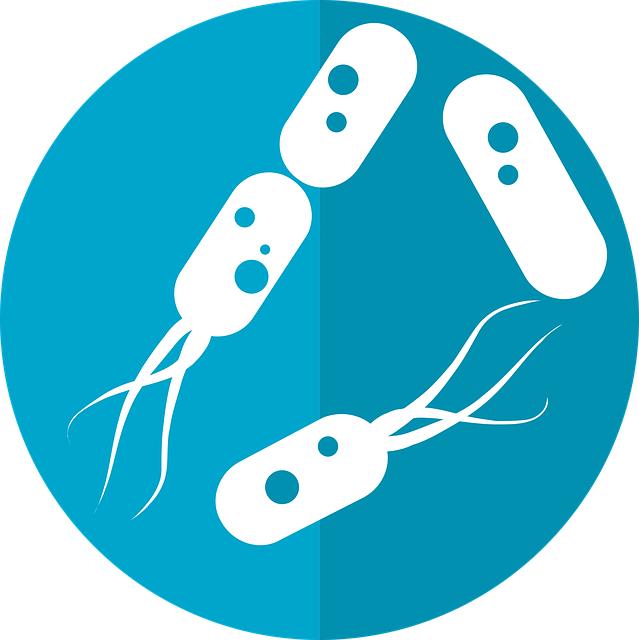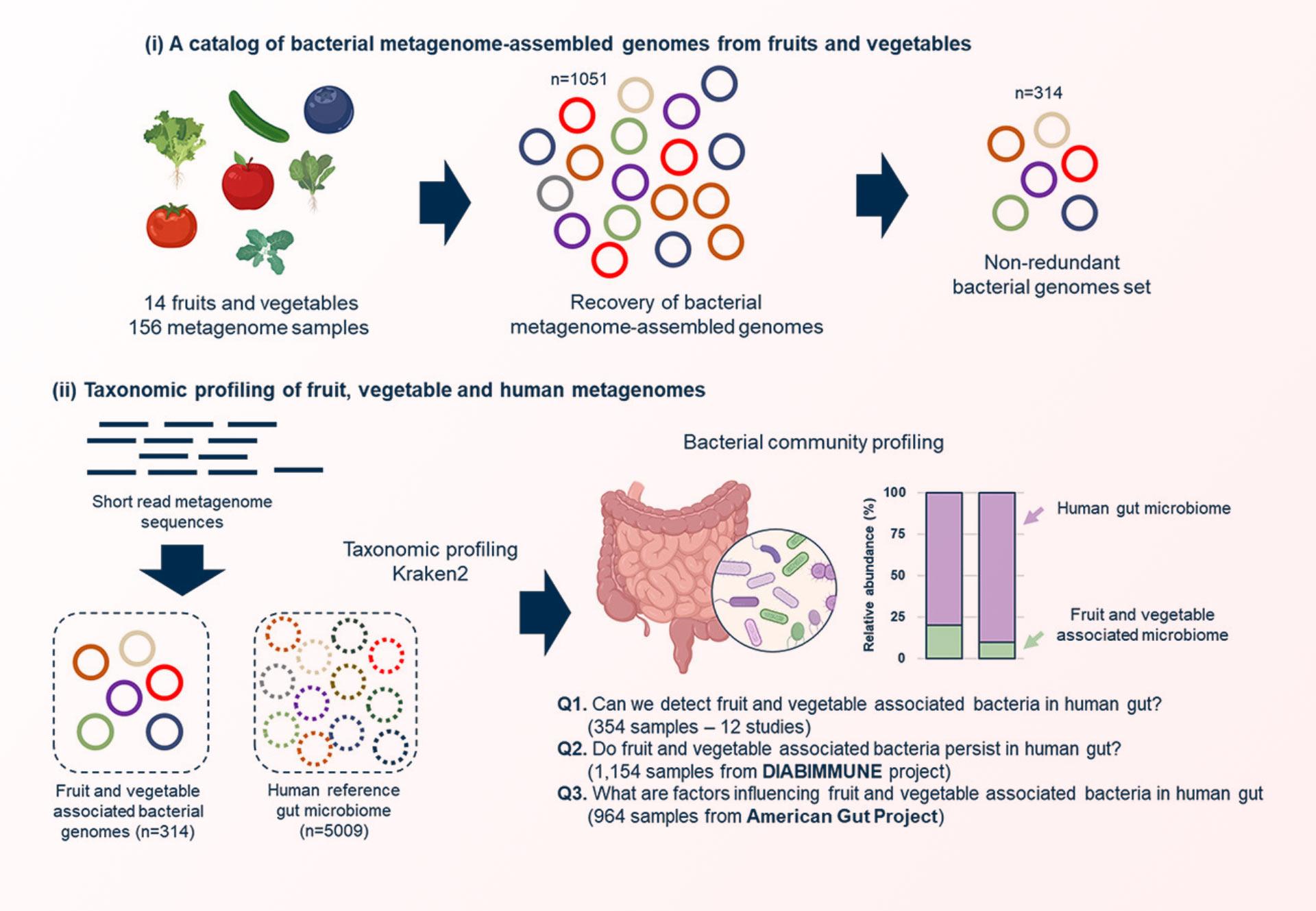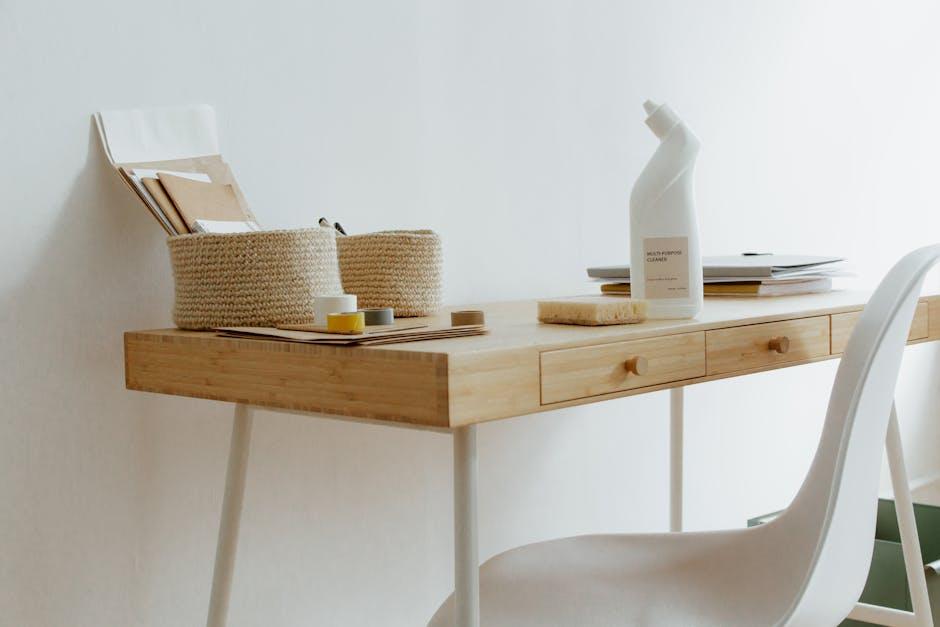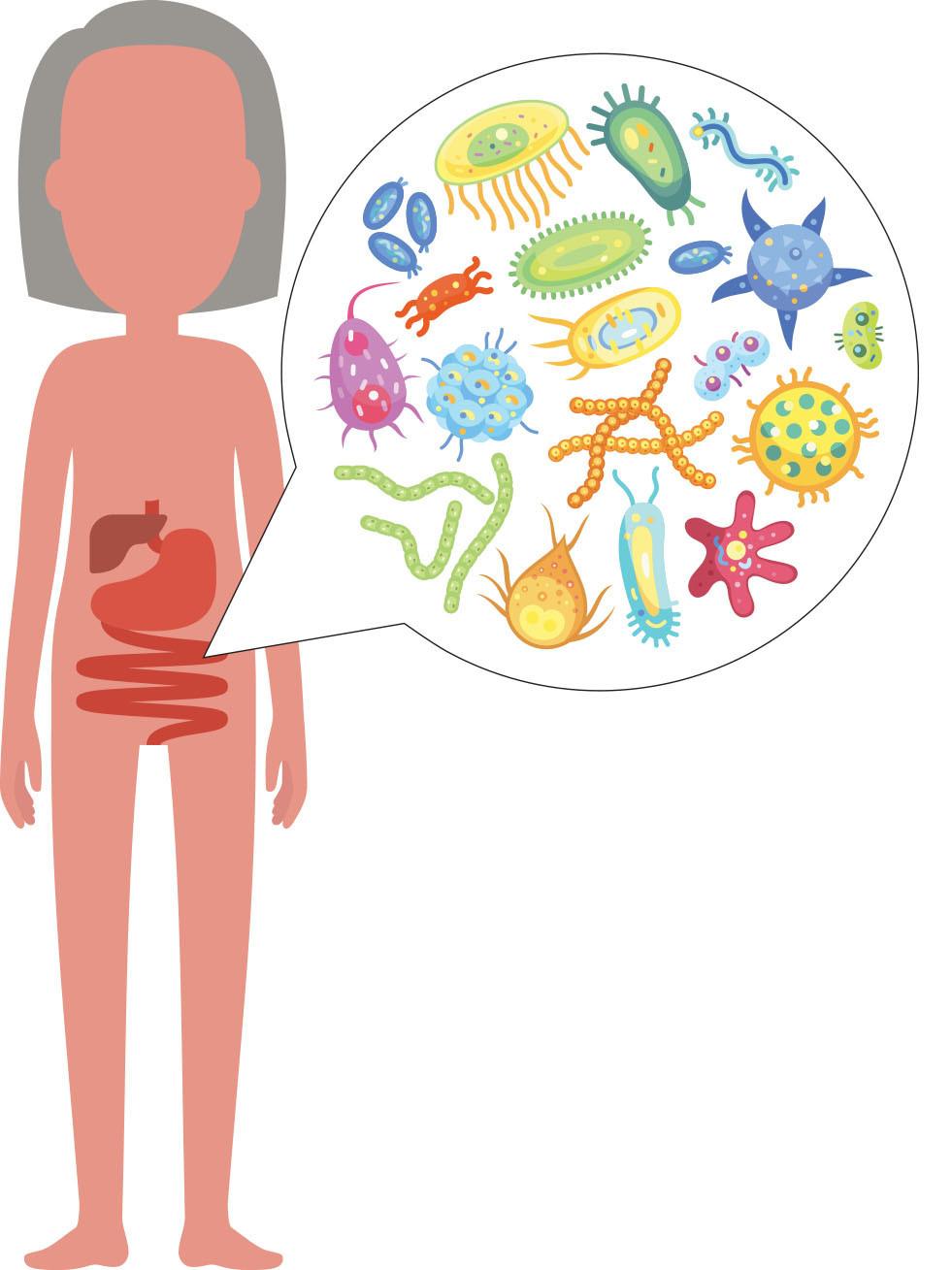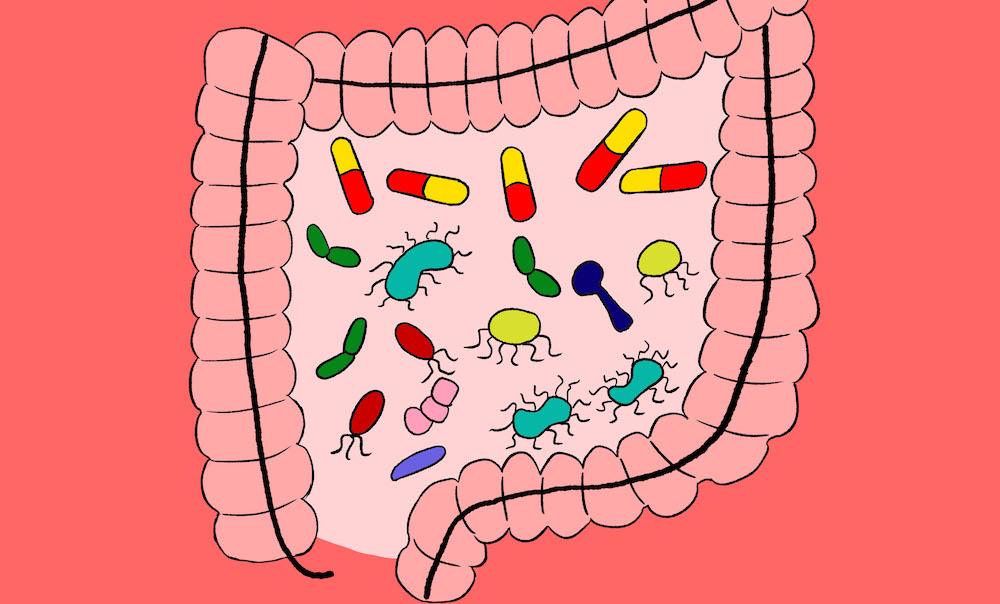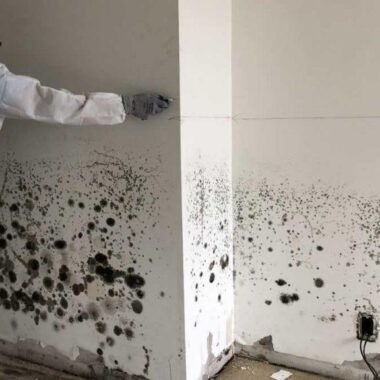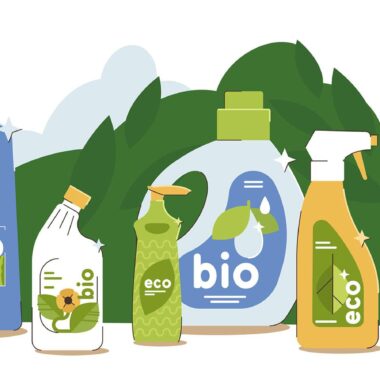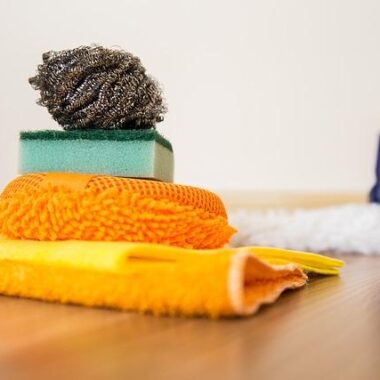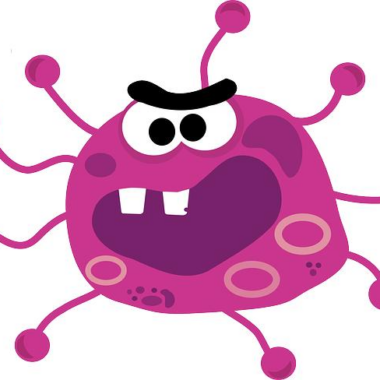Have you ever stopped to think about the hidden world living right under your nose — or perhaps, more accurately, in your home? We’re talking about the fascinating and complex universe of microorganisms that make up your home microbiome! It’s a term that might sound like something out of a science fiction novel, but trust me, the implications for your family’s health are very real. Imagine if you could harness the power of these tiny entities to create a happier, healthier living environment. Sounds intriguing, right?
You might be wondering: why should we care about our home microbiome? Well, as it turns out, the balance of these microorganisms contributes significantly to everything from our immunity to our mental well-being. Whether it’s that funky smell in the corner of the living room or the occasional sneeze that can’t seem to be explained, understanding your home microbiome can be crucial to addressing common family health issues.
So, grab a comfy seat, and let’s dive into the importance of a balanced home microbiome. By the end of this read, you’ll be equipped with knowledge that not only enlightens but empowers you to take actionable steps toward a healthier home environment for you and your family. Are you ready to transform your space into a microbiome-friendly haven? Let’s go!
Table of Contents
- Understanding the Microbiome: Why It Matters for Your Family’s Health
- Exploring the Impact of Microbiome Diversity on Well-Being
- Simple Ways to Enhance Your Home Microbiome
- Foods That Nourish Your Family’s Microbiome
- How Your Cleaning Products May Be Disrupting Microbial Balance
- Signs Your Home Microbiome Needs Attention
- Building a Microbiome-Friendly Home: Tips for Every Family
- The Connection Between a Healthy Microbiome and Mental Health
- Real Family Stories: Transforming Health Through Microbiome Awareness
- Easy Steps to Create a Microbiome-Balanced Environment
- Q&A
- In Summary
Understanding the Microbiome: Why It Matters for Your Family’s Health
Have you ever thought about the tiny organisms living in and around your home? Your family’s health is deeply intertwined with the community of microorganisms we call the microbiome. These microscopic beings, including bacteria, viruses, and fungi, play a pivotal role in our immune system, digestion, and even our mood. By maintaining a balanced microbiome at home, you’re not just creating a cleaner environment; you’re also fostering a healthier family.
Think of your microbiome like a bustling city. Each microbe has its own role, contributing to the overall health and vitality of the ecosystem. When the balance is just right, your family thrives. However, when certain species outnumber others, it can lead to issues such as allergies, asthma, and digestive problems. So, how do you ensure this community stays in harmony? Simple changes in your routine can make a world of difference.
- Diverse Diet: Just like a city thrives with diverse residents, your microbiome benefits from a varied diet rich in fibers, prebiotics, and probiotics. Incorporating foods like yogurt, sauerkraut, fruits, and vegetables nourishes these tiny allies.
- Reduce Chemical Exposure: Harsh chemicals in cleaners and personal care products can disrupt your home’s microbiome. Opting for natural alternatives not only protects the air quality but also supports the beneficial bacteria present.
- Minimize Over-Sanitizing: While cleanliness is essential, over-sanitizing surfaces can strip away healthy microbes. Striking a balance allows beneficial bacteria to flourish while keeping harmful germs at bay.
Interestingly, even our pets contribute positively to our family microbiome. Their fur, dander, and waste introduce a whole new array of microorganisms that can bolster the health of family members, especially little ones. Engaging with furry friends not only brings joy but also enriches your body’s natural defenses against various ailments.
If you’re curious about just how the microbiome affects our health, consider this: research shows that a healthy gut microbiome can influence everything from allergies to mental well-being. Studies have linked a rich and diverse microbiome with better mood regulation, underscoring the connection between our gut and brain. In this way, nurturing your family’s microbiome extends beyond physical health—it plays a vital role in emotional wellness, too.
So, how can you measure the impact of your microbiome-friendly efforts? Below is a simple table showing the benefits you might expect to see with a balanced microbiome:
| Microbiome Balance | Health Benefits |
|---|---|
| Rich in Probiotics | Improved digestion and nutrient absorption |
| Diverse Diet | Enhanced immune system function |
| Lower Chemical Use | Fewer allergies and respiratory issues |
Exploring the Impact of Microbiome Diversity on Well-Being
When we think about our health, the bacteria living inside us might not be the first thing that comes to mind. But here’s the twist: these tiny organisms play a massive role in our overall well-being. The diversity of your home microbiome can influence everything from digestion to mood. Imagine it as an ecosystem, where a variety of plants and animals work together to create a balanced environment. The same goes for your gut and home microbiome—variety is key!
So, what does a diverse microbiome look like? It’s all about having a mix of different types of bacteria. Think of it like a potluck dinner: every guest brings their unique dish, creating a feast of flavors and nutrients. In a gut that’s bursting with diversity, you’re equipped to better absorb nutrients and fight off illness. Instead of just a few “mainstays” at the dinner, a wide array of microbiota ensures that your body can tackle various challenges head-on.
Research shows that households with varied lifestyle habits—like cooking styles and dietary preferences—tend to foster a more diverse microbiome. Integrating foods rich in probiotics and fiber can further boost this diversity. Instead of zoning in on the same meals day after day, why not explore meals from different cultures? It’s not only an adventure in taste but also a powerful way to enrich your home microbiome.
But what happens when diversity dips? It can lead to a host of problems. From gastrointestinal issues to an increased risk of mental health issues, a less diverse microbiome is associated with numerous health concerns. Imagine neglecting the plants in a garden; over time, without proper care and variety, it wouldn’t take long before it starts to wilt. Conversely, maintaining a balanced microbiome can provide robust support and resilience against illness.
Here are a few easy ways to nurture a healthy home microbiome:
- Fermented Foods: Incorporate yogurt, kimchi, and sauerkraut into your meals.
- Diverse Diets: Get creative with a wide range of fruits, veggies, and whole grains.
- Minimal Processed Foods: Cut down on sugar and preservatives, which can disrupt balance.
In addition to dietary choices, your environment matters too! Factors like pets in the home, exposure to nature, and cleanliness practices can all impact microbial diversity. While a scrupulously clean home might seem ideal, there’s such a thing as too clean! Embracing a little messiness can actually aid in fostering a thriving microbiome, much like a well-loved garden. Remember, a little variety goes a long way when it comes to cultivating health.
Simple Ways to Enhance Your Home Microbiome
Your home is more than just a place to lay your head; it’s a living ecosystem filled with microorganisms that influence your health in countless ways. Enhancing this ecosystem can be simpler than you think! Here are a few easy steps you can take to support a diverse and balanced home microbiome.
- Open the Windows: Fresh air is key! Letting in the outdoors helps introduce a variety of microbes that can thrive in your living space. Aim to air out your home daily, even if it’s just for a few minutes.
- Introduce Indoor Plants: Not only do they purify the air, but plants are also home to beneficial bacteria and fungi. Adding a few low-maintenance options, like snake plants or pothos, can enhance your indoor microbiome.
- Reduce Cleaning Product Usage: Many household cleaners contain harsh chemicals that can wipe out beneficial microbes. Embrace more natural cleaning solutions or simply cut back to once a week if possible.
Another easy step? Embrace a variety of foods! Including fermented foods such as yogurt, sauerkraut, and kefir in your diet can introduce healthy bacteria into your gut. And guess what? The more diverse your diet, the more diverse your microbiome becomes. So don’t shy away from trying new recipes or cuisines!
Consider your pets, too! They’re natural carriers of a range of microbes due to their outdoor explorations. Routinely interacting with them can help introduce these beneficial microorganisms into your home environment. Just remember to balance cleanliness with embracing the messiness that comes with loving your furry friends.
If you want to track how well you’re nurturing your home microbiome, here’s a quick table to help you monitor your progress:
| Action | Frequency | Effect on Microbiome |
|---|---|---|
| Open Windows | Daily | Increases microbial diversity |
| Add Indoor Plants | Once a Month | Enhances air quality |
| Fermented Foods | Several Times a Week | Boosts gut microbiota |
keep technology in check. Less screen time and more face-to-face interactions can actually promote a healthier microbiome. Social connections have been shown to impact your immune system positively. So, gather your family or friends for some quality time – it’s beneficial in more ways than one!
Foods That Nourish Your Family’s Microbiome
Did you know that the foods you choose can have a significant impact on your family’s microbiome? It’s true! Incorporating a variety of nutrient-dense foods into your meals can support the growth of beneficial bacteria and promote a healthy gut environment. Let’s explore some delicious options that can help nourish your loved ones’ bellies and support their overall health.
1. Fermented Foods
Fermented foods are superheroes when it comes to gut health. Think of items like sauerkraut, yogurt, kefir, and kimchi. These foods are brimming with probiotics—those friendly bacteria that can help balance your microbiome. How about jazzing up taco night with a side of tangy kimchi or adding a dollop of yogurt to your morning smoothie? It’s a tasty and easy way to get those beneficial bacteria into your diet.
2. Fiber-Rich Vegetables
Vegetables are not just good for your eyes; they’re also crucial for your gut! Foods high in fiber, like broccoli, carrots, and Brussels sprouts, become food for the good bacteria in your intestines. This helps them flourish. Consider roasting a colorful medley of vegetables sprinkled with olive oil and your favorite herbs—they’re not only nutritious but also scrumptious!
3. Whole Grains
Whole grains are another powerhouse for gut health. They provide prebiotics—substances that feed those beneficial bacteria. Foods like oats, quinoa, and brown rice can make for a hearty base in many dishes. You could try whipping up a warm quinoa salad packed with veggies and a light vinaigrette for a meal that’s both satisfying and rich in gut-loving goodness.
4. Nuts and Seeds
Don’t overlook the benefits of nuts and seeds! Almonds, walnuts, chia seeds, and flaxseeds are not only nutrient-dense but also rich in fiber and healthy fats. A sprinkle of chia seeds in your family’s morning oatmeal or a handful of nuts as a snack can go a long way in supporting digestive health. Remember, the healthier the snacks, the happier the gut!
5. Fruits
Fruits are nature’s candy, packed with vitamins, minerals, and fiber. Berries, apples, and bananas are fantastic for your microbiome. Whether blended into a smoothie, sliced on top of yogurt, or eaten as a snack, they’re delightful and nutritious options. Plus, their natural sweetness can help curb those cravings for processed sugars!
6. Table of Superfoods
| Food | Gut Health Benefits |
|---|---|
| Yogurt | Rich in probiotics |
| Kefir | Supports digestion and immunity |
| Kimchi | Enhances microbial diversity |
| Oats | Feeds good bacteria |
| Berries | Loaded with antioxidants |
How Your Cleaning Products May Be Disrupting Microbial Balance
Have you ever thought about the impact of your cleaning products on the tiny ecosystems that call your home their home? Many of us reach for those bright, colorful bottles, believing they’ll wipe away germs and dirt. But here’s the kicker: while you’re scrubbing surfaces, you might also be disrupting the delicate balance of beneficial microbes in your living space. These microorganisms play vital roles in your family’s health, from supporting your immune system to aiding in digestion.
Most conventional cleaning products are loaded with harsh chemicals. Think about bleach and ammonia; they might make your kitchen shine, but they can also obliterate friendly bacteria along with the bad ones. When you use these cleaners, you’re not just erasing dirt; you’re potentially weakening your home’s microbiome, making it harder for beneficial bacteria to thrive. This can lead to an overgrowth of harmful microbes, which in turn can affect your family’s overall well-being.
Have you ever noticed how kids get sick more often when you’re using strong disinfectants? It’s not just bad luck. Research suggests that homes with high levels of toxic cleaning agents can correlate with increased respiratory issues and allergies, especially in young children. These products can irritate the respiratory system and lead to a chaotic microbial environment where harmful bacteria can flourish.
So, what can you do to protect the microbial balance? Well, consider opting for natural cleaning alternatives. Ingredients like vinegar, baking soda, and essential oils can effectively clean and disinfect without the risk of disrupting your home’s beneficial bacteria. Imagine a cleaning routine that preserves your home’s natural defenses while keeping surfaces sparkling clean! Plus, it’s a lot more fun to involve the kids in concocting homemade cleaners—it’s like a mini science experiment that teaches them about health!
Let’s take a closer look at some natural cleaning solutions versus their conventional counterparts. Here’s a simple table highlighting the differences:
| Cleaning Product | Effect on Microbial Balance | Eco-Friendliness |
|---|---|---|
| Bleach | Disrupts | Not Eco-Friendly |
| Baking Soda | Neutral | Eco-Friendly |
| Vinegar | Neutral to Beneficial | Eco-Friendly |
| Ammonia | Disrupts | Not Eco-Friendly |
| Essential Oils | Potentially Beneficial | Eco-Friendly |
Shifting towards greener cleaning options allows you to create a healthier environment. Just imagine your home as a mini eco-system teeming with friendly microbes! By prioritizing their well-being, you’re not just cleaning; you’re nurturing a habitat that fosters health and resilience for your family. So next time you grab that bottle from under the sink, think twice—your family’s health may just depend on it!
Signs Your Home Microbiome Needs Attention
Ever noticed sneezing, coughing, or sniffles becoming your home’s constant background music? A shift in your home microbiome can cause these irritating symptoms. When the balance of microorganisms gets disrupted, it’s like having an uninvited guest—one that makes your family uneasy and uncomfortable. If the air in your space feels perpetually stuffy or your loved ones seem to get sick more often than usual, it might be time to investigate what’s lurking in your home.
Take a closer look at the surfaces in your home. Are you seeing more dust, grime, or mildew than usual? Dust mites and mold can wreak havoc on your indoor environment, leading to allergic reactions or respiratory issues. If you find that your cleaning routine is not keeping up with the grime, you may need to rethink how you approach cleaning and the products you use. *Are they friendly to your microbiome,* or are they just wiping out all the good bacteria along with the bad?
Speaking of cleaning products, if you’re using a ton of harsh chemicals to keep your home spick and span, it might be affecting your microbiome at home. Systemic use of antibacterial agents can tilt the scale, stripping away the beneficial microbes while leaving the hardy ones to persist. Consider swapping those potent sprays for natural alternatives. Trust us, your home environment—and your family—will thank you for it!
Another signal that your microbiome could use a dose of TLC is when pests become more than just a rare sighting. If you’ve noticed an uptick in rodents or bugs, the balance of healthy bacteria and fungi may be out of whack. These unwanted visitors thrive in the same unkempt, bacteria-heavy areas that might signal a problem. A few pest sightings can quickly turn into a full-blown infestation if not addressed. *So, are those pest traps set up?*
Let’s not forget about your family’s mood and overall well-being! A microbiome that’s not balanced can lead to more than just physical symptoms. Emotional health and mood swings can be influenced by the state of your home’s microbiome! If family members seem more irritable or sluggish than normal, it could be a sign to look deeper. After all, our environment has a profound impact on our mental state.
Lastly, keep an eye on your indoor plants. If they start yellowing or wilting unexpectedly, it might be an indicator of something off in the air. Healthy plants usually help create a thriving home microbiome by contributing to a balanced ecosystem. So, if they’re struggling, take a second to consider what that could mean for your family’s health. A healthy home microbiome isn’t just about keeping the bad guys at bay; it’s about nurturing the good that can bring life into your space.
Building a Microbiome-Friendly Home: Tips for Every Family
Creating a home that nurtures a healthy microbiome is easier than you think. Start by opting for natural cleaning products instead of harsh chemicals. Many cleaning agents can disrupt the delicate balance of microbes in your home. Look for ingredients like vinegar, baking soda, and essential oils that do the job without compromising your family’s health. Here’s a quick list of effective natural cleaners you can whip up easily:
- All-purpose cleaner: Combine equal parts water and vinegar.
- Disinfecting spray: Mix water with a few drops of tea tree oil.
- Glass cleaner: Use water with a splash of lemon juice.
Consider incorporating more plants into your living spaces. Not only do they improve air quality, but they also introduce beneficial microbes. Some low-maintenance options are spider plants, peace lilies, and snake plants. Plus, caring for plants can be a fun family bonding activity! To really tap into the benefits of plants, think about creating a little indoor herb garden. Basil, mint, and rosemary can all thrive indoors while adding fresh flavors to your meals.
Your home’s dietary habits are crucial too. Cooking with fermented foods like yogurt, kimchi, or sauerkraut can boost your family’s gut health. Why not start a weekly family fermentation night? Get everyone involved in making their own batch of fermented foods. It’s a great way to educate kids about good bacteria while having fun in the kitchen!
Let’s not forget about filtering your water. The quality of the water you use can significantly impact the microbiome in your home. Investing in a good water filter can remove harmful contaminants while promoting healthier microbes. Not only will it better your family’s health, but it’ll also enhance the flavor of your meals and drinks.
Make a point to limit the use of antibacterial soaps. While it’s important to keep our hands clean, overusing these products can strip away protective bacteria and create an imbalance. Instead, opt for gentle soap and good old-fashioned handwashing techniques. You could even try turning hand washing into a family-friendly game to encourage the kids to wash correctly!
consider revisiting your home décor choices. If you have carpets or heavy drapes, they can accumulate dust and allergens. Instead, think about choosing easy-to-clean materials like hardwood floors and washable fabrics. These choices not only look great but also help maintain a healthier microbiome by reducing dust accumulation. Let’s go for stylish yet practical!
The Connection Between a Healthy Microbiome and Mental Health
Did you know that your gut health can significantly impact your mental well-being? It’s fascinating how the trillions of bacteria that reside in our intestines play a vital role in regulating not just our physical health, but also our mood and cognitive functions. A diverse and balanced microbiome can lead to better emotional stability, while an imbalance can contribute to anxiety, depression, and other mood disorders.
Think of your gut as a bustling city where various bacteria, fungi, and viruses coexist. Just like a thriving community, this micro-ecosystem thrives on diversity. When friendly bacteria are in ample supply, they send signals to your brain that promote feelings of happiness and calm. On the flip side, when harmful bacteria take over, they can trigger inflammation that may interfere with neurotransmitter production, leading to issues like brain fog or irritability.
Research is increasingly supporting the gut-brain connection, showing that the gut produces around 95% of the body’s serotonin—a key hormone that stabilizes mood and feelings of happiness. Foods rich in probiotics, such as yogurt and fermented vegetables, can help maintain this balance. Regularly incorporating these into your family’s diet might just set a foundation for not only physical wellness but mental clarity as well.
Furthermore, a healthy microbiome has been linked to improved cognitive functions, such as memory and learning. Kids, in particular, benefit from a balanced gut as it can enhance their focus and academic performance. Imagine your child breezing through homework with a clear mind and improved concentration, all thanks to their gut friendly diet. It’s like ensuring they have a solid study buddy right in their belly!
Another fascinating aspect is the feedback loop between our gut and brain. Stress can negatively impact our gut health, which, in turn, can exacerbate stress and anxiety. It’s a vicious cycle! To combat this, fostering a balanced home environment filled with whole foods, regular exercise, and stress management techniques like yoga or meditation can promote not just a healthier microbiome but also a calmer mind. This creates a nurturing atmosphere that supports the mental health of every family member.
To bring it all together, the connection between our microbiome and mental health underscores the importance of incorporating gut-friendly practices into family life. A balanced meal plan, lifestyle adjustments, and mindful stress relief can pave the way for a happier household. It’s time to prioritize gut health and witness the positive ripple effects it can have on everyone’s mental wellness!
Real Family Stories: Transforming Health Through Microbiome Awareness
As we dive into the world of microbiomes, it’s fascinating to see how the daily lives of families are being shaped by this tiny but mighty community of microorganisms. In homes across the globe, families are discovering the remarkable influence of a balanced microbiome on health. It’s not just about who brings the best bacteria into the house—it’s about creating an environment where everyone thrives. Have you ever noticed how the simple act of gardening or cooking can enhance your family’s health from the ground up?
Let’s talk about Sarah’s family from California. After her son was diagnosed with allergies, she decided to investigate the root cause. Through her research, she learned about the microbiome and its role in immune health. Sarah transformed their home into a haven for beneficial bacteria by:
- Incorporating more fermented foods—think yogurt, sauerkraut, and kimchi.
- Planting a home garden filled with a variety of herbs and vegetables.
- Avoiding unnecessary antibiotics unless absolutely needed.
Within a few months, Sarah noticed a remarkable change in her son’s health. His allergies became more manageable, demonstrating how a balanced microbiome can directly affect immune responses. This is just one example of how awareness and small adjustments can lead to significant health transformations for families.
The experience of the Gomez family in Texas highlights another aspect of microbiome awareness—education. They involved their children in making decisions about food, which not only made them more conscious eaters but also sparked their interest in health. By learning what nourishes their microbiome, they embraced a wider variety of foods:
- Whole grains for prebiotics.
- Colorful fruits and vegetables for antioxidants.
- Plant-based proteins for a diverse nutrient intake.
Empowering children to understand these choices encouraged the whole family to experiment with cooking, turning mealtime into an educational adventure.
Then there’s the Smiths from Ohio, who faced frequent illnesses as a family. They took a proactive approach by inviting microbiome specialists to their community to educate others. They learned about how household cleaning products could disrupt their microbiome balance. This realization led them to:
- Switch to natural cleaning supplies to minimize chemical exposure.
- Encourage outdoor play to expose their children to diverse bacteria.
By embracing these changes, they transformed their home into a vibrant environment that nurtured good bacteria rather than hindering it. Their commitment to a balanced microbiome resulted in fewer sicknesses and improved overall family health.
When we look at all these stories together, it’s evident that a balanced home microbiome is not just a scientific concept, but a practical family lifestyle. Each story illustrates that we all have the potential to influence our health starting from home. Whether it’s through dietary changes, household choices, or educational endeavors, embracing microbiome awareness can yield profound effects on our family’s health.
as families share their stories and inspire one another, the ripple effect of microbiome awareness continues to grow. It’s a community effort, reminding us all of the interconnectedness of our health and environment. So why not take the plunge and make small changes today? Your family’s health may just thank you for it in the long run.
Easy Steps to Create a Microbiome-Balanced Environment
Creating a microbiome-balanced environment in your home is simpler than you might think! To start, focus on reducing the use of harsh chemicals. Many household cleaners contain ingredients that can disrupt microbial life. Consider switching to natural alternatives, like vinegar and baking soda, or look for eco-friendly products. Not only are these safer for your family, but they also help maintain a healthy balance of microorganisms.
Next, it’s essential to enhance indoor air quality. Did you know that air quality can significantly impact your home microbiome? Open those windows and let fresh air in regularly. Introduce indoor plants like spider plants or peace lilies that can purify the air while creating a more inviting space. With proper ventilation and some green friends, you’ll boost the overall health of your indoor ecosystem!
Getting to know what you’re letting into your home is vital. Choose organic food when possible. Conventional produce is often treated with pesticides that can influence the microbiome. Organic foods may be more expensive, but they often come with a higher diversity of microorganisms, beneficial for both your gut health and that of your home’s environment. You can also opt for food items with less packaging, minimizing your exposure to chemicals.
Another fun way to encourage a microbiome-friendly home is by embracing the art of fermentation. Foods like yogurt, sauerkraut, and kimchi are not only tasty but are also packed with probiotics that benefit your health. You can even try making your own fermented foods at home! When you involve your family in the process, you’ll not only educate them about the benefits of healthy bacteria but also bond over a delicious project.
Don’t forget about your furry family members. Pet ownership can enhance your microbiome, simply due to their presence! Dogs and cats bring in different bacteria that can be beneficial. Just ensure you keep your pets healthy and parasite-free to keep the microbial ball rolling in your home. Regular vet check-ups and a healthy diet for your pets will contribute positively to your living environment.
consider limiting the use of antibiotics for both family and pets. Antibiotics, while necessary for treating infections, can wipe out beneficial bacteria alongside harmful ones. If you find yourself frequently reaching for antibiotics, chat with your healthcare provider about alternative therapies or preventive strategies that can help preserve your family’s microbiome.
Q&A
Q&A: Why a Balanced Home Microbiome is Crucial for Your Family’s Health
Q1: What is a microbiome, and why should we care about it at home?
A: Great question! Your microbiome is like an invisible community living inside and outside of you, made up of trillions of bacteria, fungi, and other tiny organisms. It’s essential to your health because it influences everything from digestion to immune response. Think of it as your body’s tiny support squad! Keeping a balanced microbiome at home can help ensure your family stays happy, healthy, and free from pesky illnesses.
Q2: How does the microbiome at home affect my family’s health?
A: The home is a mini-ecosystem where your family’s microbiome interacts with everyday items—think doorknobs, kitchen surfaces, and even pet fur. A balanced microbiome can help fend off harmful germs and boost your overall well-being. Imagine it like this: a well-tended garden thrives; similarly, nurturing a balanced microbiome can prevent unwanted “weeds” (like sickness) from sprouting in your family.
Q3: I heard that certain foods can impact my microbiome. What should we be eating?
A: Absolutely! Your diet is one of the most significant factors influencing your microbiome. Foods rich in fiber, like fruits, veggies, and whole grains, are like fertilizer for your garden—helping the good bacteria flourish. Probiotic foods (think yogurt, sauerkraut, and kombucha) are like the friendly neighbors who help your microbiome thrive. Reducing sugar and processed foods, however, can help prevent those uninvited guests from crashing the party.
Q4: Are there any signs that our home microbiome might be out of balance?
A: Yes, there certainly are! If you or your family members are experiencing more sick days than usual, digestive issues, or even skin problems, it might be a sign that your microbiome needs some attention. It’s like noticing that your garden isn’t blooming; it’s time to investigate and nourish it back to health.
Q5: What practical steps can we take to create a healthier home microbiome?
A: A few simple changes can work wonders! Start by incorporating more diverse, plant-based foods into your meals. Next, boost ventilation in your home to reduce humidity, allowing beneficial microbes to thrive while keeping harmful ones at bay. Don’t forget to clean with natural, non-toxic products; harsh chemicals can disrupt the balance. Lastly, spending more time outdoors can help expose your family to diverse microbes, enriching your home microbiome even more!
Q6: How can I measure if our microbiome is balanced and healthy?
A: While there are tests available that can analyze the composition of your microbiome, you don’t need a lab to figure things out! Pay attention to how you feel on a daily basis—consistent energy, good digestion, clear skin, and a resilient immune system are good indicators of a balanced microbiome. Plus, if your family is happy and healthy, that’s the best sign you can get!
Q7: Is it too late to make changes if I’ve neglected our home microbiome?
A: Not at all! It’s never too late to start. Just like a garden can flourish with proper care, so can your microbiome. Small, consistent changes over time—like improving your diet and cleaning habits—can lead to major rewards for your family’s health. So, let’s roll up our sleeves and get started on this journey to a happier, healthier home!
Q8: What’s the next step we should take after learning all this?
A: If you’re ready to boost your home’s microbiome and enhance your family’s health, why not dive into a new recipe featuring those fiber-packed goodies? Or perhaps, start a little family project to clean with safe, natural products. Take that passionate step today and watch how a healthier home microbiome can transform your family’s overall well-being!
So, are you ready to create a healthier, happier home? Let’s get started today!
In Summary
As we wrap up our exploration on the importance of maintaining a balanced home microbiome, remember that this isn’t just about gut health—it’s about your family’s overall wellness! Picture your home as a mini ecosystem; every little decision you make can positively influence the balance of friendly bacteria that thrive there. So, whether it’s swapping out processed snacks for fresh fruits, bringing a few plants into the living room, or even engaging in more outdoor activities, every step counts.
Imagine the smiles on your kids’ faces as they munch on colorful veggies instead of sugary treats, or the fun family hikes that promote not just health but also those cherished bonding moments. It’s about creating a vibrant, health-promoting environment where everyone inside can flourish.
Take a moment to assess your current habits and see where you can bring a little more balance into your life. Are there simple swaps you can make today? Or perhaps, you want to dive deeper into your microbiome knowledge?
Now’s the time to take action! Let’s transform your home into a haven of health and happiness! If you found this article helpful, share it with friends and family—they might thank you for it later. Together, let’s spread the word about how a thriving microbiome can lead to a healthier family. Your journey to a happier home begins now! What changes will you make today?


